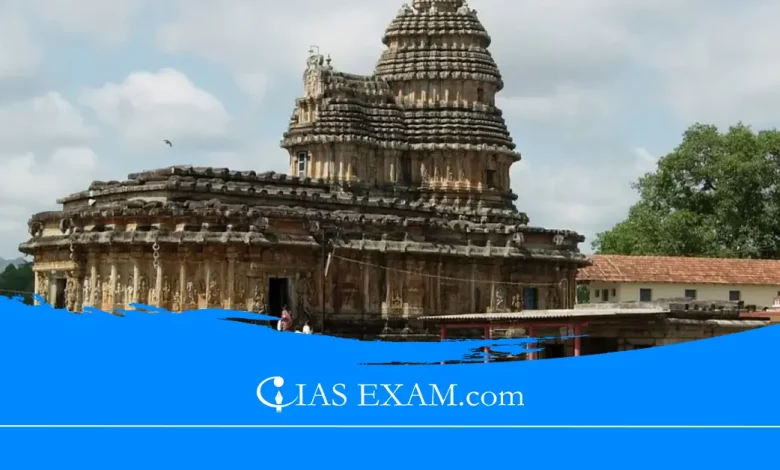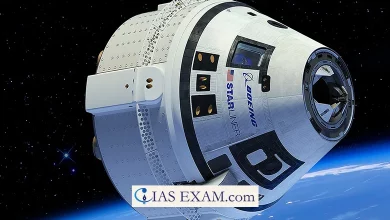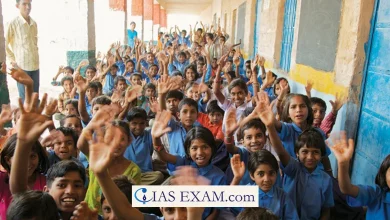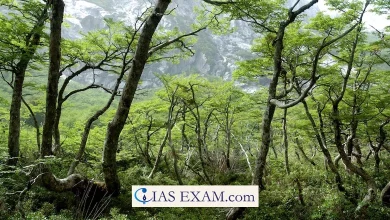
Context
The Karnataka State Legislative Assembly has recently passed the Karnataka Hindu Religious Institutions and Charitable Endowments (Amendment) Bill, 2024.
About Karnataka’s Temple Bill
- Alteration of Taxation System:
-
-
- The Bill aimed to adjust the taxation of Hindu temples.
- It proposed diverting 10% of gross profits from temples making over Rs 1 crore yearly to a common pool for temple protection.
- Previously, the allocation was 10% of the net incomes for temples income over Rs 10 lakh yearly.
- Net profits are calculated based on the profits of the temple after accounting for its prices, while gross incomes truly refers to the whole sum of money the temple makes.
- The Bill additionally suggested allocating 5% of income from temples income between Rs 10 lakh and Rs 1 crore to the common pool.
- These adjustments could have generated an extra Rs 60 crore from 87 temples with income over Rs 1 crore and 311 temples with profits exceeding Rs 10 lakh.
-
- Utilisation of Common Fund:
-
-
- The commonplace fund can be utilised for functions together with religious research and propagation, temple preservation, and other charitable causes.
- The not common fund pool was created in 2011, by amending the 1997 Act.
-
- Composition Management Committee :
-
-
- The Bill advised including a member skilled in Vishwakarma Hindu temple architecture and sculpture to the “committee of control” of temples and spiritual institutions.
- Under Section 25 of the KHRI & CE 1997 Act, temples and spiritual institutions are required to shape a “committee of management” consisting of 9 people, including a priest, at the least one member of a Scheduled Caste or Scheduled Tribe, girls, and one member of the locality of the organization.
-
- Rajya Dharmika Parishat:
-
- The Bill empowered the Rajya Dharmika Parishat to rent committee chairpersons and take care of spiritual disputes, temple statuses, and trustee appointments. Additionally, it mandated the advent of district and state committees to oversee infrastructure projects for temples incomes over Rs 25 lakh annually.
Concerns Regarding the Bill
- The Bill may also be challenged on the grounds of discrimination, because it applies best to Hindu temples, and not to other religious institutes.
- The Bill can also face scrutiny under Article 14 of the Constitution, which guarantees equality before the regulation and equal safety of the laws, and prohibits arbitrary and unreasonable nation movement.
- Critics argued that such interference ought to potentially infringe on the constitutional rights granted under Article 25.
- Article 25 ensures people’ freedom to profess, exercise, and propagate faith, problem to public order, morality, and health.
- Article 25(2) (a) empowers the State to adjust or limit the activities of any religious practice that are monetary, political, financial in nature or some other interest which is secular.
- Additionally, issues were raised concerning the potential violation of rights assured under Article 26.
- Article 26 offers religious denominations autonomy to manipulate their religious affairs and establish institutions for religious and charitable functions.
- It is feared that the invoice will result in corruption and mismanagement of temple budget and belongings by using the government-appointed Rajya Dharmika Parishath.
- It garnered criticism from the opposition, alleging governmental overreach and financial exploitation of temples.
Temple revenue collection device in different states
- In Telangana, religious institutions making more than ₹50,000 yearly are required to pay 1.5% of their annual incomes to the country authorities.
- In Kerala, temples are managed by state-run Devaswom (temple) Boards.
- In Uttarakhand, fifty one temples and shrines together with Badrinath, Kedarnath, Yamunotri, and Gangotri were freed from the state government’s control in 2021.
History of Regulations of Temple in India
- In 1927 the Justice Party enacted the Madras Hindu Religious Endowments Act, 1927.
- In 1950, the Law Commission of India suggested that law must be exceeded to check the misuse of funds and properties of temples.
- The Tamil Nadu Hindu Religious and Charitable Endowments (TNHR&CE) Act, was enacted, but its constitutional validity was challenged before the Supreme Court.
- In the landmark Shirur Mutt case, the Court upheld the general law, even though it struck down some provisions. A revised TNHR&CE Act changed into legislated in 1959 and holds the field today.
Hindu Religious Endowments Commission
- In 1960, the Government of India constituted the Hindu Religious Endowments Commission chaired by Dr. C. P. Ramaswami Aiyar
- The goal was to inquire into matters linked with Hindu Public Religious Endowments.
- The Commission declared that government control over temples changed into vital to prevent maladministration and discovered that the absence of enactments regulating administration of Hindu temples in some States caused “general apathy and consequent neglect of the institutions”.
Source: The Hindu
UPSC Mains Practice Question
Q.How the Indian concept of secularism is different from the western model of secularism? Discuss. (2016)





.png)



